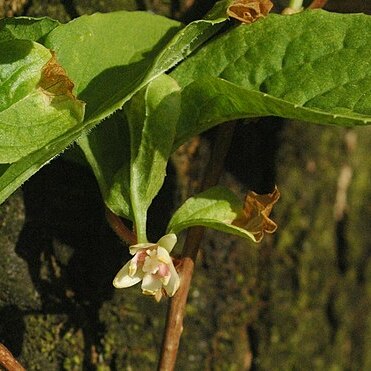Shrubs , evergreen or deciduous, scandent or twining, glabrous. Leaves alternate, simple, without stipules, petiolate. Leaf blade often fragrant (especially when bruised or crushed), translucent-dotted, ovate to lanceolate, pinnately veined, thin to leathery, margins entire to remotely dentate. Flowers unisexual, staminate and pistillate on same [different] plants, axillary, solitary, pedunculate; peduncle bracteolate; perianth hypogynous; tepals 5-20, imbricate, distinct, in 2[-3] series, all similar but innermost more petaloid. Staminate flowers: stamens 4-80, hypogynous, distinct or connate partially or completely into fleshy, globose or discoid mass, in 1-several series; anthers basifixed, 4-locular, longitudinally dehiscent; pollen 3-or 6-aperturate; pistil absent. Pistillate flowers: pistils simple, 6-300, distinct, closely set in few to many series on globose to elongate axis, attached obliquely; placentation marginal to pendulous; ovules [1-]2-3[-10] per locule; stigmatic surface adaxial; stamens absent. Fruits aggregates of berries, produced on elongate axis. Seeds [1-]2-3[-10] per berry, flattened; endosperm copious, oily; embryo small.

